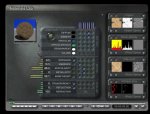alvordr
0
Fractal Generation
Folks,
I've been toying with the idea of using fractals to generate new textures. I know people have used Fractal Noise for After Effects (something I don't own). I've found a number of fractal generators that, although don't specifically perform all the functions that Fractal Noise handles, I figure I could work with the fractals in Photoshop, etc., to do basically the same thing.
Has anyone else messed with fractals at all in their work and how successful were the implementations?
Anything we should avoid, please also list those.
NOTE: By the way, I found a few free Mac-friendly fractal programs I thought might be worth using. I hope this helps:
FractalWorks
Endlos
Xaos
Also, if you're insane enough to try to program one of these, this site may be extremely useful, as the math behind it seems rather simple (for Einstein!):
Fractal Mathematical Equations
Folks,
I've been toying with the idea of using fractals to generate new textures. I know people have used Fractal Noise for After Effects (something I don't own). I've found a number of fractal generators that, although don't specifically perform all the functions that Fractal Noise handles, I figure I could work with the fractals in Photoshop, etc., to do basically the same thing.
Has anyone else messed with fractals at all in their work and how successful were the implementations?
Anything we should avoid, please also list those.
NOTE: By the way, I found a few free Mac-friendly fractal programs I thought might be worth using. I hope this helps:
FractalWorks
Endlos
Xaos
Also, if you're insane enough to try to program one of these, this site may be extremely useful, as the math behind it seems rather simple (for Einstein!):
Fractal Mathematical Equations
Last edited:





